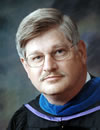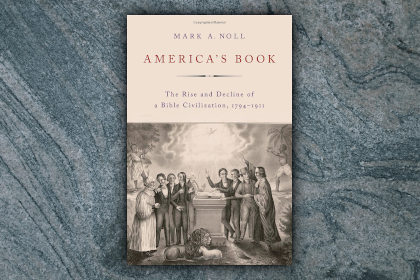Understanding Conservative Christianity, Part 9

Read Part 1, Part 2, Part 3, Part 4, Part 5, Part 6, Part 7.0, Part 7.5, Part 7.75, Part 7.9, and Part 8.
Conclusions
History, we are told, is written by the victors. The victors who control American evangelicalism and fundamentalism are the pragmatists and revivalists. On their account, the church before Finney was lifeless and hopelessly ineffective. Only the advent of “new measures” brought about the sweeping revivals of Finney, Moody, Sunday, and (depending upon whether you are an evangelical or a fundamentalist) either Graham or Hyles.
This history has gained the status of a powerful mythology. It tells American Christians who they are. It reassures them that, if they are not the greatest generation of believers in the history of the church, that generation is only recently past and today’s American Christian is the immediate heir to its riches.
Conservatism directly challenges that mythology. What people have been taught to see as great works of God, conservatives understand to be betrayals of the faith. What American Christians view as successes, conservatives see as disasters.
Contemporary Christians, be they evangelical or fundamentalist, are often willing to concede that their version of Christianity has some blemishes, but they insist that it is basically healthy and sound. Conservatives, however, perceive in these blemishes the indications of malignant tumors that threaten the entire body. They believe that cosmetic treatments will prove ineffective.
What treatment will be effective? Here conservatives disagree among themselves. Some believe that the only solution lies in the complete abandonment of the present evangelical and fundamentalist institutions. They seek to separate themselves from all things “fundagelical” and to erect enclaves, often as small as single families, within which the remnants of the Christian heritage can be cherished until the Lord comes or a day arrives when sobriety can flourish again.
Other conservatives try to find room to work within some fundamentalist (rarely evangelical) churches and institutions. They see a high degree of continuity between their convictions and those of the earliest evangelicals (the Reformers, the Pietists, the Puritans, and the Great Awakeners). Indeed, these conservatives think of themselves as paleoevangelicals or retroevangelicals. They work together in an informal network that crosses institutional and even denominational boundaries.
Conservative Christians are reclamationists. On the one hand, they are trying to reclaim the best of the Christian tradition. On the other hand, they hope to reclaim part of the infrastructure of American Christianity for conservative ideals.
A moment ago I compared American evangelicalism to a diseased body. Let me offer a different analogy. American evangelicalism and fundamentalism are like a condemned house that occupies a city lot. All conservatives would like to prepare a dwelling place on that lot. Some believe that new construction can begin only when the old house has been completely demolished, and so they set about destroying the contemporary evangelical and fundamentalist movements with vigor and even a kind of glee. Other conservatives believe that parts of the old house can be salvaged, even though the parts may require significant structural modification. These conservatives admit that dangerous decay must be sawn out, but they wish to reclaim as much of the structure as they can.
Neither kind of conservative, however, is contented to live indefinitely in the house as it is. For one thing, the decay is growing worse. For another, conservatives have children to rear—and the condemned house is full of the spiritual equivalents of mold and lead paint that threaten a child’s safety. At best, only a few rooms are livable.
Conservatives look to the Christian past, not only for their principles, but for examples of forebears who sought to hold the Christian heritage in the face of a world dominated by doctrinal decay, ecclesiastical innovation, and corrosive world-centeredness. To a greater or lesser degree, they find such a pattern in the Reformers, in the Swiss brethren, in the English Puritans and separatists, in the German Pietists, in the Great Awakeners such as the Wesleys, Whitefield, and especially Edwards, and in the Princetonians. They even find models in voices who spoke from the fringes of fundamentalism, voices as diverse as J. Gresham Machen and A. W. Tozer.
Conservative Christians believe that their task is to reclaim a full-orbed, historic, biblical Christianity. Their task is made difficult by the unfavorable environments of fundamentalism and evangelicalism. It is complicated further by the fact that conservatives are trying to reconstruct a heritage that was not handed to them intact. Whether they reject it entirely, or whether they attempt to revise and refurbish it, the only living tradition that is available to Christian conservatives today is the tradition of innovation, popularization, and anti-traditionalism that derives from Finney and his kind.
Conservatives themselves do not yet understand everything that conservative Christianity should involve. They have confidence in their core ideas, but they do not yet know every conclusion to which those ideas will lead. They are reformers, but they also recognize that they themselves still need to be reformed.
Conservative Christians are especially mindful of the Puritans and Pilgrims, previous generations of believers who sought to repristinate the Christian faith. They remember the words of John Robinson, pastor of the Pilgrim congregation: “God hath yet more light to break forth from His holy word.” Like Robinson and his Pilgrims, they stand ready to receive that truth, even if at the same cost.
Madrigal
Anonymous (before 1600)
If that a sinner’s sighs be angels’ food,
Or that repentant tears be angels’ wine;
Accept, O Lord! in this most pensive mood
These hearty sighs and tears of mine:
That went with Peter forth most sinfully;
But not with Peter wept most bitterly.
If I had David’s crown to me betide,
Or all his purple robes that he did wear;
I would lay then such honour all aside,
And only seek a sackcloth weed to bear:
His palace would I leave, that I might show
And mourn in cell for such offence, my woe.
There should these hands beat on my pensive breast;
And sad to death, for sorrow rend my hair:
My voice to call on Thee, should never rest;
Whose grace I seek, Whose judgment I do fear,
Upon the ground, all grovelling on my face,
I would beseech Thy favour and good grace!
But since I have not means to make the show
Of my repentant mind, and yet I see
My sin, to greater heap than Peter’s grow,
Whereby the danger more it is to me:
I put my trust in His most precious blood,
Whose life was paid to purchase all our good.
Thy mercy greater is than any sin!
Thy greatness none can ever comprehend!
Wherefore, O Lord! let me Thy mercy win,
Whose glorious name, no time can ever end:
Wherefore, I say, “All praise belongs to Thee!”
Whom I beseech be merciful to me.
 This essay is by Dr. Kevin T. Bauder, president of Central Baptist Theological Seminary (Plymouth, MN). Not every professor, student, or alumnus of Central Seminary necessarily agrees with every opinion that it expresses. This essay is by Dr. Kevin T. Bauder, president of Central Baptist Theological Seminary (Plymouth, MN). Not every professor, student, or alumnus of Central Seminary necessarily agrees with every opinion that it expresses. |
- 5 views

Discussion